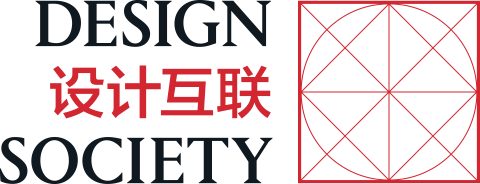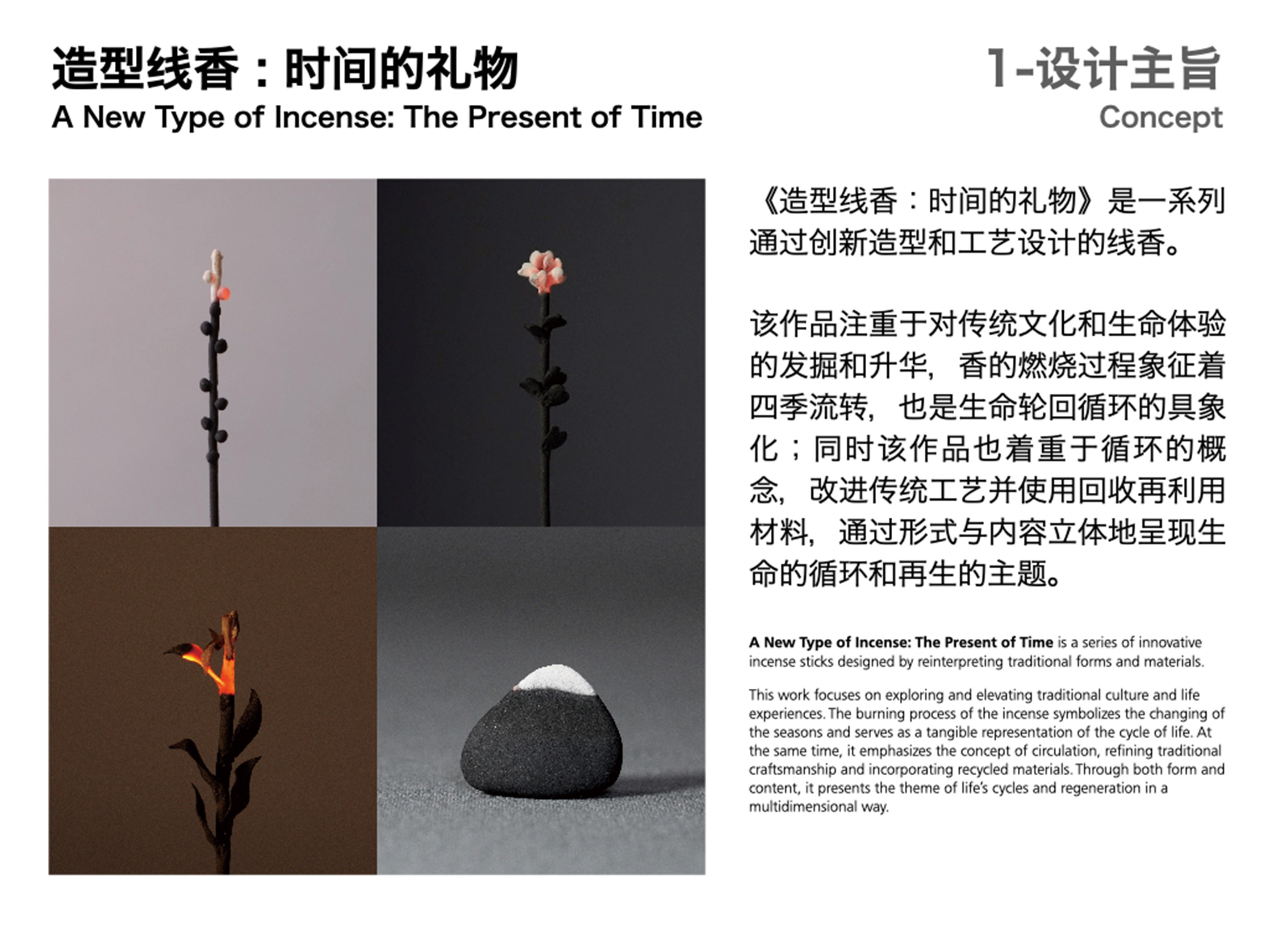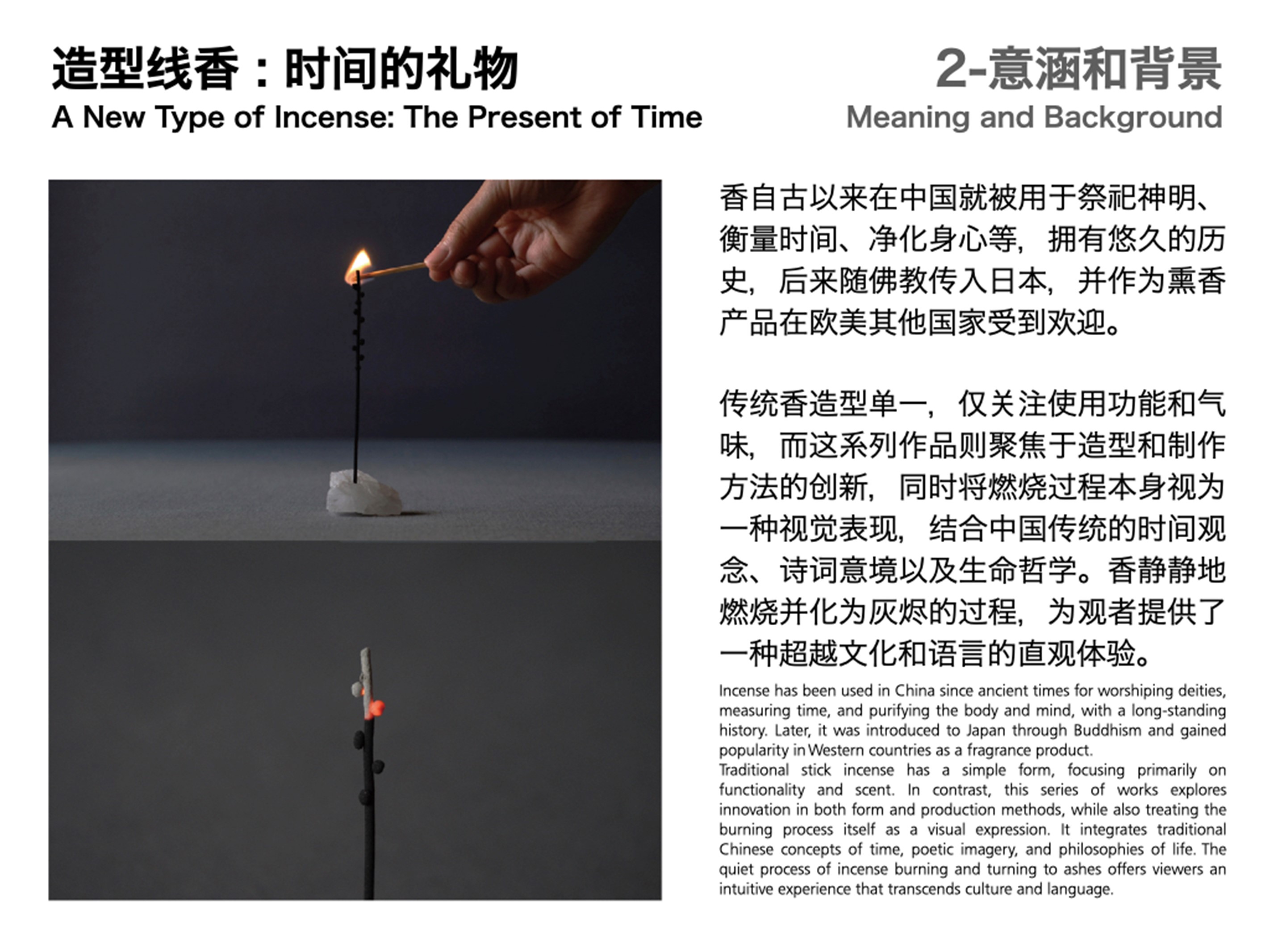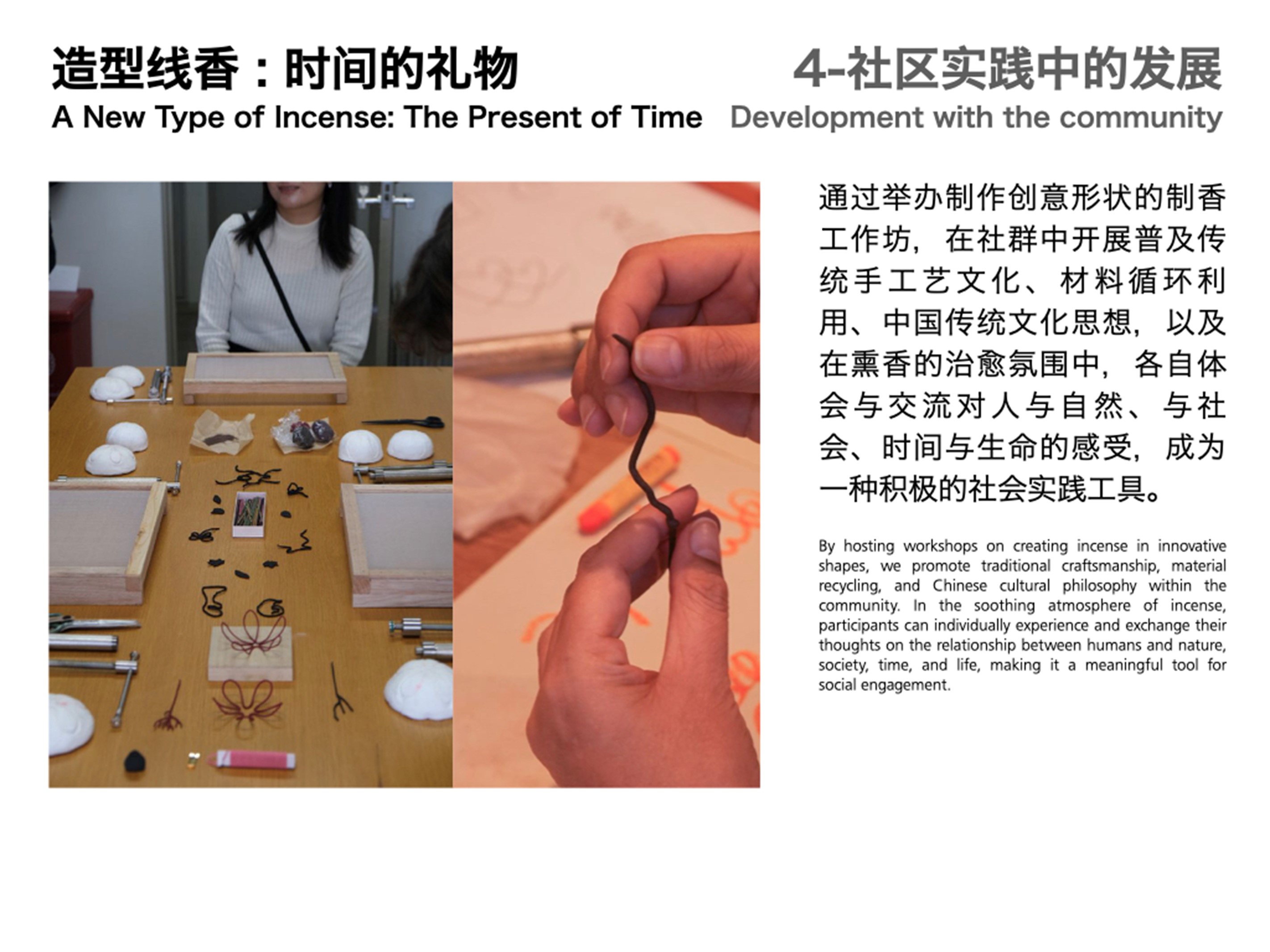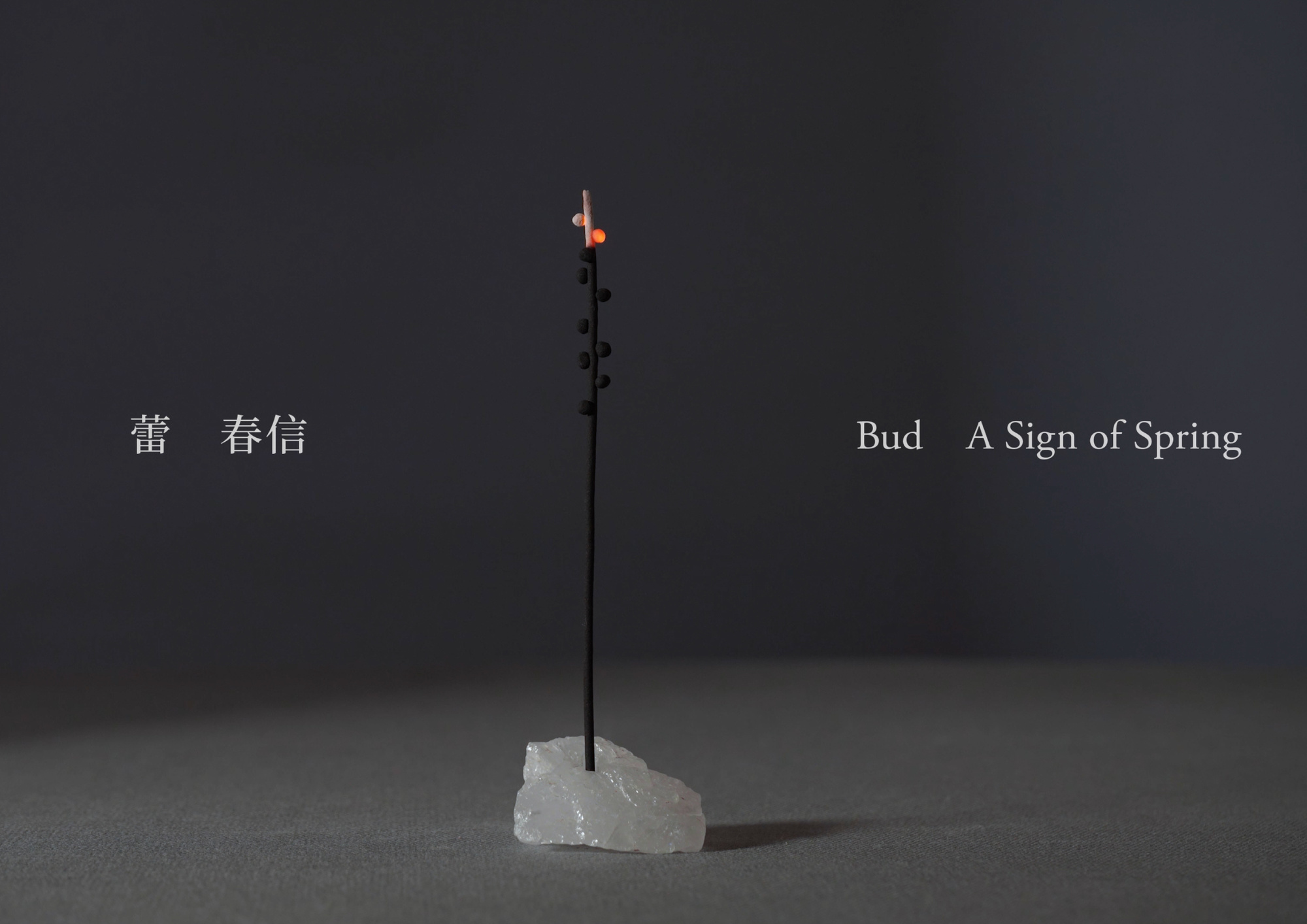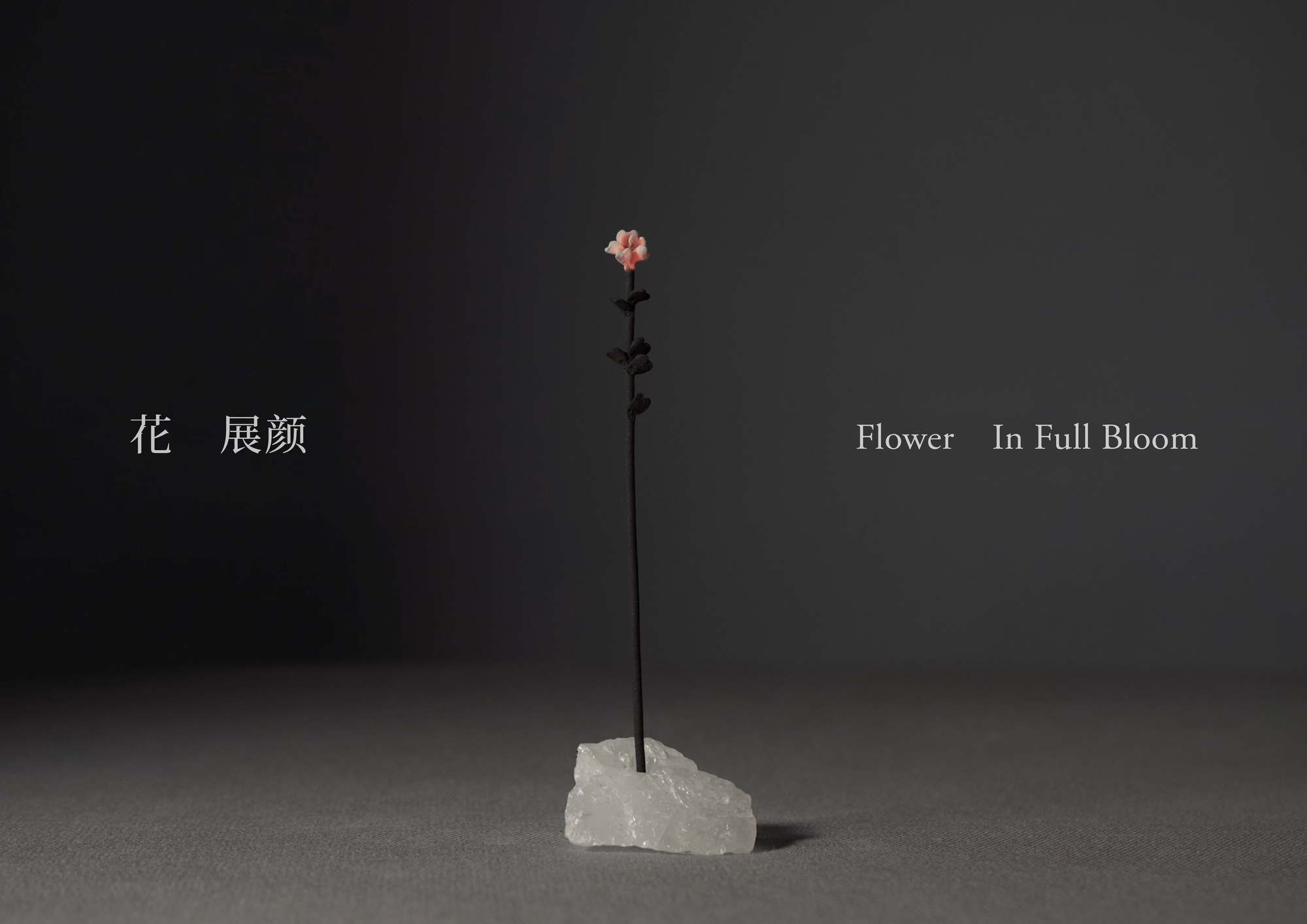Four kinds of incense effect video
Detailed works scheme pptx

Burning Effect-Bud: Chunxin

Burning Effect-Flower: Show
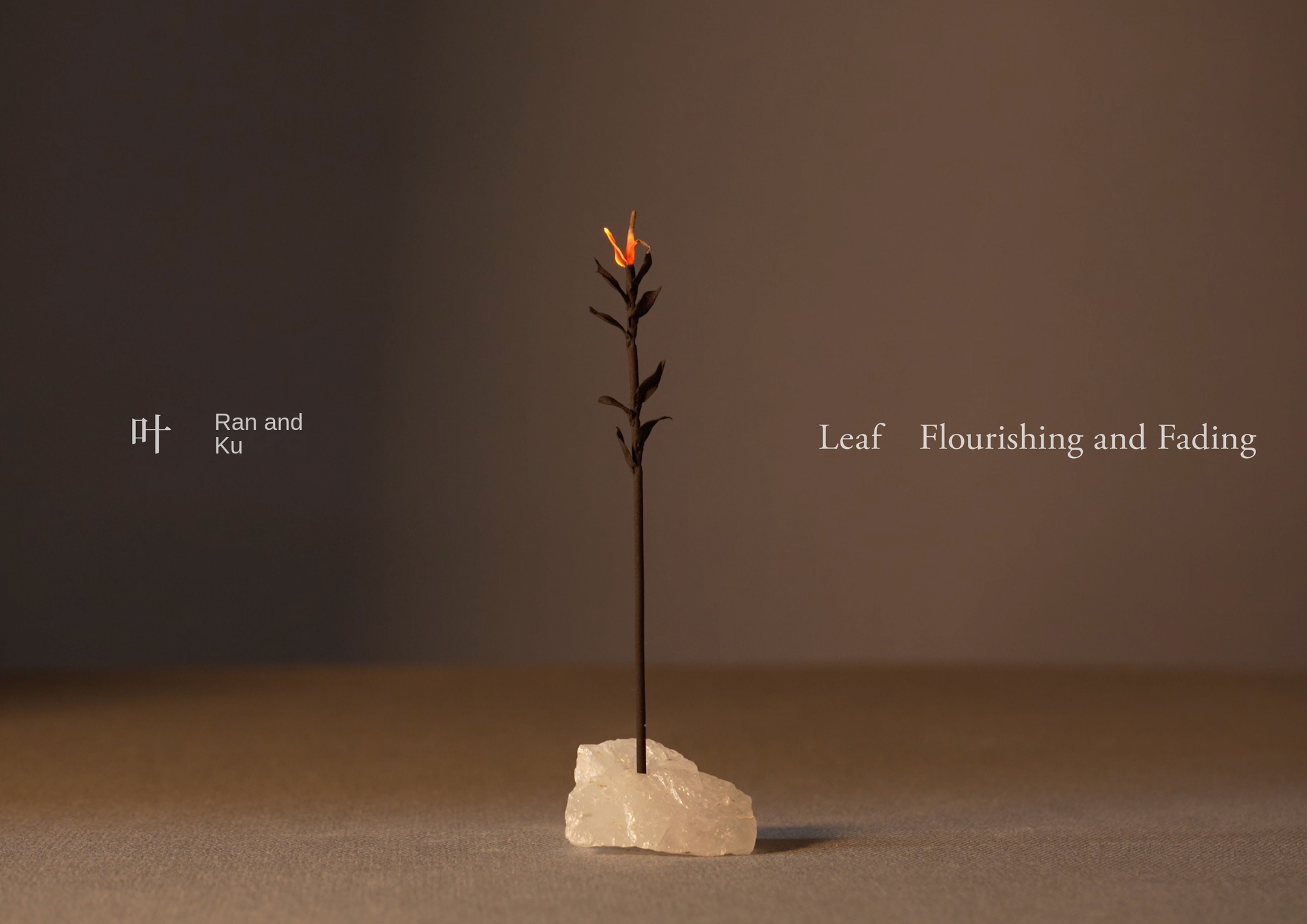
Burning Effect-Leaf: Ran and Ran
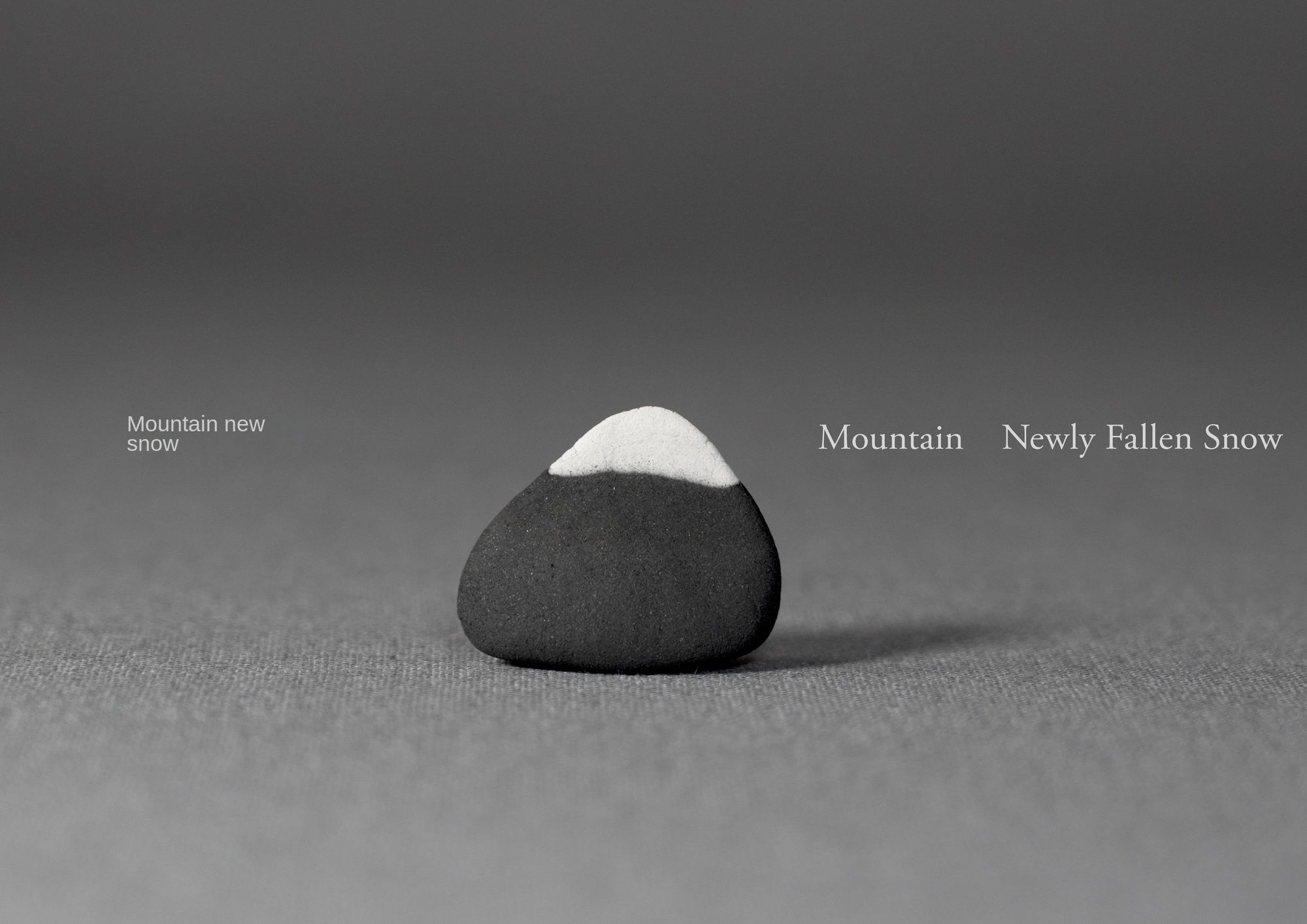
Burning Effect-Mountain: New Snow

Packaging effect
"Styling Line Incense: The Gift of Time" is a series of line incense designed through innovative modeling and craftsmanship.
Since ancient times, incense has been used to worship gods, measure time, purify body and mind, etc. in China. It has a long history. Later, it was introduced into Japan with Buddhism and was welcomed as incense products in other European and American countries. The traditional line incense has a single shape, focusing on the use function and smell, while this series of works focuses on the innovation of the shape and production method of the incense itself, and at the same time regards the combustion process itself as a visual expression, aiming at intuitively showing the flow of time. The raw materials of the work add a part of recycled tea and other residues on the basis of traditional fragrant materials, which not only visually embodies the concept of circulation, but also expresses this idea through the production process.
With the theme of the four seasons, the work transforms the fragile and short life form into a natural shape. The burning process of these incense symbolizes the circulation of the four seasons and the replacement of solar terms. For example, when a bud-shaped incense is lit, the bright light spot is reminiscent of an early spring plum blossom; a leaf-shaped incense is as red as an autumn leaf and eventually withers. In spring, a piece of youth; in winter, snow falls. Just like the artistic conception in ancient poetry: "one year old comes and goes", "one after another opens and falls". Time passes linearly, life cycles in cycles, and flowers bloom and fall are equally worth savoring.
The traditional Chinese concept of time is closely related to the circulation of the four seasons, while the idea of Zen emphasizes the connotation of the present and points directly to the hearts of the people. In today's fast-paced life, people not only pursue sensory experience, but also expect spiritual return and peace. The exploration of traditional crafts and culture has become a flexible language and carrier, which is a metaphor for the subtle connection between man, nature and material. Silently watching the process of incense burning and turning into ashes provides viewers with an intuitive experience that transcends culture and language. "Present" is not only the present, but also a gift that can be brought by savoring the present time. "Share this incense with you", the process of incense is also a precious time to re-establish the connection with others and nature.
Having a professional background in product design and graphic design, and paying attention to the inheritance and innovation of traditional culture and co-creating social design, I can research and create between art and design, tradition and modernity from multiple dimensions.
The experience of studying and working in Japan and the UK has enabled me to examine Chinese traditional culture and contemporary design from an overseas perspective. Japan and China belong to East Asia, and their cultures come down in one continuous line. Tea ceremony, incense ceremony and Zen Buddhism all originated from China, and showed different styles in the development process of Japan. When thinking about the blending and differences between Chinese and Japanese culture and art, I pay more attention to the more original and core parts of Chinese culture, as well as its universal value in today's society. Inheriting traditional culture is not only a repetition of ancient crafts, but also a comprehensive understanding, finding a breakthrough point and in-depth study in the profound historical context.
In contrast, the UK regards East Asian culture as a distant and unique existence, so it shows more diverse interests in the perspective of art and design. When introducing Eastern thought and culture to the British audience, the unique way of thinking and expression in East Asia is particularly prominent. Making good use of this point can become an important opportunity for cultural exchanges. At the same time, I pay attention to transcend the context and differences in my works, so that the viewer can understand the works through intuitive feelings without too much explanation. Communicating in the language of "things" itself is one of the important themes in my creation.
In addition, I also pay attention to and think about the current social and environmental issues. Especially in the field of product design, with the rapid development and the prevalence of consumerism, there can be multiple perspectives on how to design and solve what kind of problems. Paying attention to the humanistic and personal spiritual level and awakening the deep perception and consciousness are the potential aspects of contemporary product design. Grand ideas and complex social issues, and even philosophical thinking that touches the essence of life, can also trigger users' understanding and thinking through small products. This is the positive significance that product design can bring to society.
Born in 1996 in Hangzhou, China.
He graduated from Tama Art University in Japan and now lives in Kyoto, Japan. He is currently studying in the Global Collaborative Design Practice Master's program jointly established by Kyoto University of Technology and University of the Arts London.
Dedicated to the study of social design and traditional craft industries in an Asian and British research context. The work focuses on the intersection of product design and visual art, and explores the novelties of traditional handicrafts and the poetry hidden in the material.
